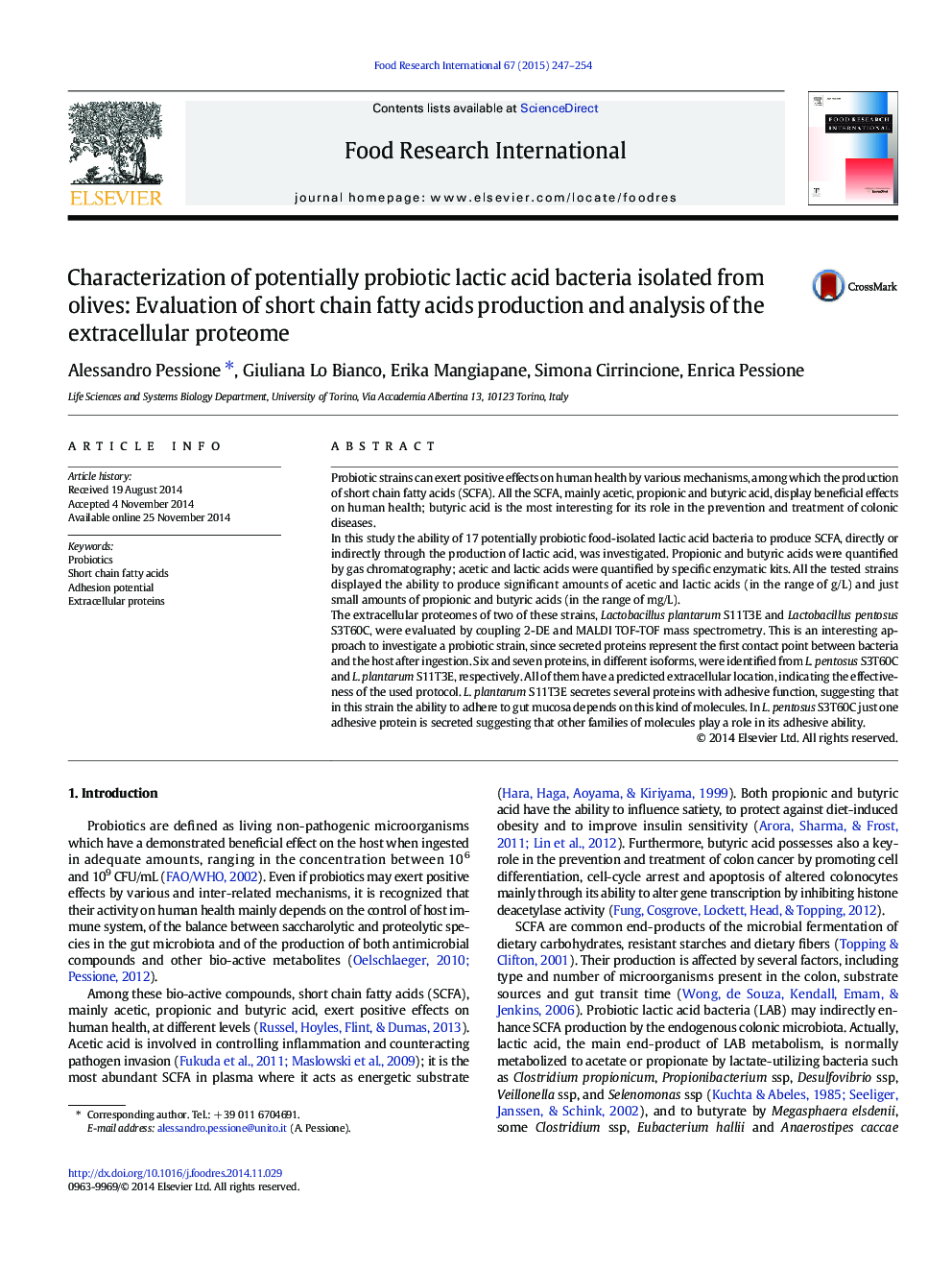| Article ID | Journal | Published Year | Pages | File Type |
|---|---|---|---|---|
| 6396074 | Food Research International | 2015 | 8 Pages |
â¢Seventeen olive-isolated probiotics were screened for the production of SCFA.â¢Propionic and butyric acids (mg/L) are less abundant than acetic and lactic acids (g/L).â¢The extracellular proteomes of the two most interesting strains were investigated.â¢The adhesive ability of L. plantarum S11T3E mainly depends on adhesive proteins.â¢In L. pentosus S3T60C adhesion is probably mediated by non proteinaceous molecules.
Probiotic strains can exert positive effects on human health by various mechanisms, among which the production of short chain fatty acids (SCFA). All the SCFA, mainly acetic, propionic and butyric acid, display beneficial effects on human health; butyric acid is the most interesting for its role in the prevention and treatment of colonic diseases.In this study the ability of 17 potentially probiotic food-isolated lactic acid bacteria to produce SCFA, directly or indirectly through the production of lactic acid, was investigated. Propionic and butyric acids were quantified by gas chromatography; acetic and lactic acids were quantified by specific enzymatic kits. All the tested strains displayed the ability to produce significant amounts of acetic and lactic acids (in the range of g/L) and just small amounts of propionic and butyric acids (in the range of mg/L).The extracellular proteomes of two of these strains, Lactobacillus plantarum S11T3E and Lactobacillus pentosus S3T60C, were evaluated by coupling 2-DE and MALDI TOF-TOF mass spectrometry. This is an interesting approach to investigate a probiotic strain, since secreted proteins represent the first contact point between bacteria and the host after ingestion. Six and seven proteins, in different isoforms, were identified from L. pentosus S3T60C and L. plantarum S11T3E, respectively. All of them have a predicted extracellular location, indicating the effectiveness of the used protocol. L. plantarum S11T3E secretes several proteins with adhesive function, suggesting that in this strain the ability to adhere to gut mucosa depends on this kind of molecules. In L. pentosus S3T60C just one adhesive protein is secreted suggesting that other families of molecules play a role in its adhesive ability.
